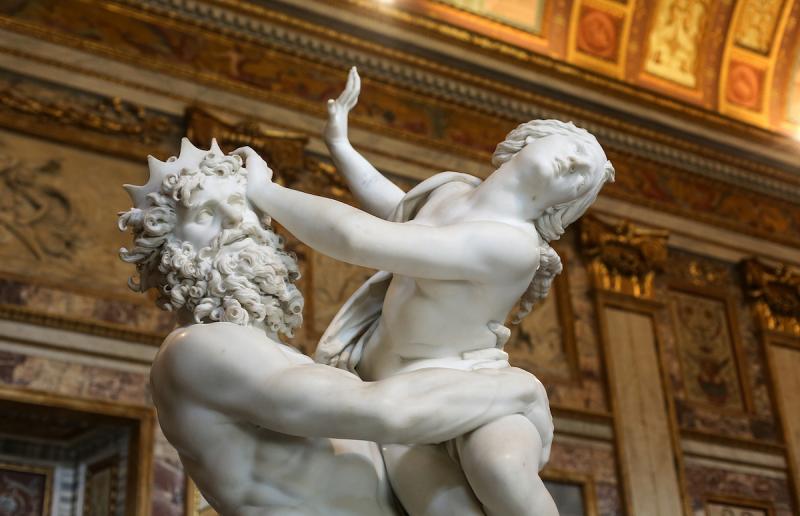Wonders of Italy: Bernini’s Rape of Proserpina
ITA:

Use player to listen to Italian version

Paywall Content
The Rape of Proserpina is a masterpiece by the great Italian sculptor Gian Lorenzo Bernini, on view inside Rome’s Borghese Gallery.
It was commissioned by cardinal Scipione Borghese, a patron of the arts, and executed between 1621 and 1622. Bernini was only 23 years old when he executed the sculpture.
The subject of the sculpture is taken from Ovid's Metamorphoses and refers to the theme of the cycle of seasons. Proserpina, daughter of Jupiter and Ceres, goddess of fertility, was kidnapped by Pluto, king of the underworld, who fell in love with her after seeing her picking flowers. Distressed, Ceres left the fields to go look for her daughter, causing a famine; Jupiter intervened by finding an agreement: Proserpina would spend nine months with her mother, but she would have to spend the winter months in hell with her now-husband Pluto.
The work depicts the abduction of Proserpina by Pluto. Bernini represents the climax of the action: Pluto surprises Proserpina from behind, she struggles with all her energy, while invoking her mother in a desperate cry. Pluto's hands encircle the waist of Proserpina just as she throws her arms out in an attempt to escape. Proserpina’s muscles are tense in an effort to support her wriggling body, so much so that Pluto's hands sink into her flesh (the most famous detail of the sculpture).
Pluto is recognizable by his royal attributes, the crown and the scepter, while behind him the monstrous figure of Cerberus makes sure that no one obstructs the path of his master by turning his three heads in all directions.
Bernini's intent is to freeze the action at the peak of its development, to convey the drama the characters experience through the movements of their bodies. Indeed, what is most striking about the sculpture is the realistic effect that Bernini achieved by carving hard marble.
The word ‘rape’ is the traditional translation from the Latin raptus, meaning ‘seized’.
Il Ratto di Proserpina è un capolavoro del grande scultore italiano Gian Lorenzo Bernini, in mostra alla Galleria Borghese di Roma.
Fu commissionato dal cardinale Scipione Borghese, mecenate delle arti, ed eseguito tra il 1621 e il 1622. Bernini aveva solo 23 anni quando realizzò la scultura.
Il soggetto è tratto dalle Metamorfosi di Ovidio e si rifà al tema del ciclo delle stagioni. Proserpina, figlia di Giove e Cerere, dea della fertilità, fu rapita da Plutone, re degli











